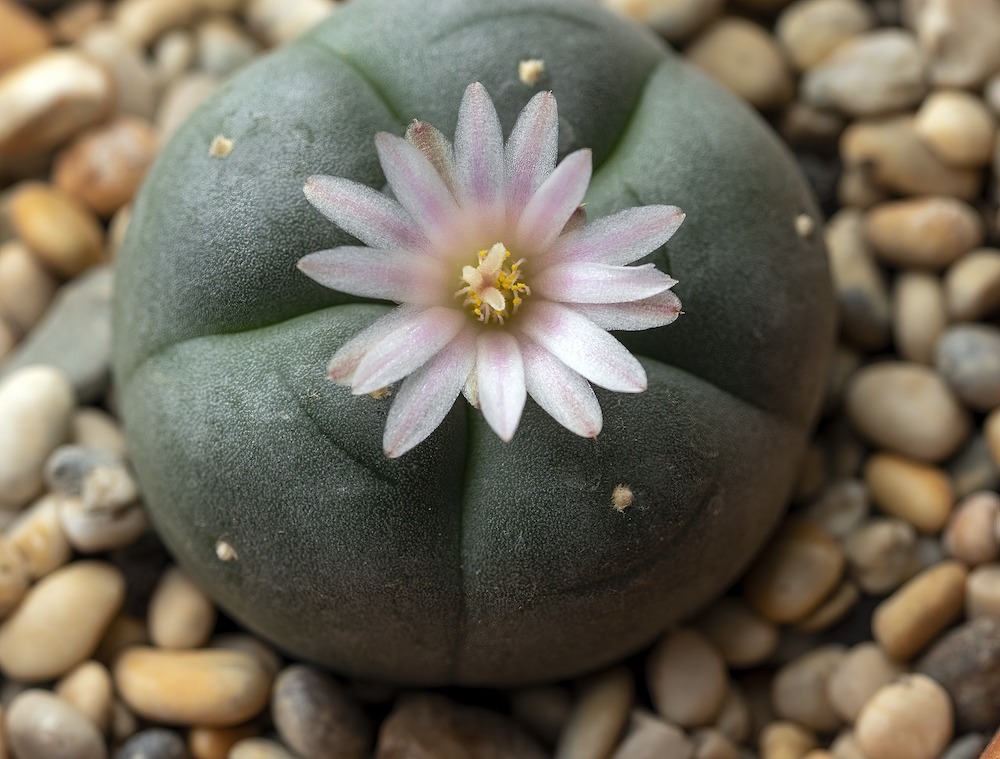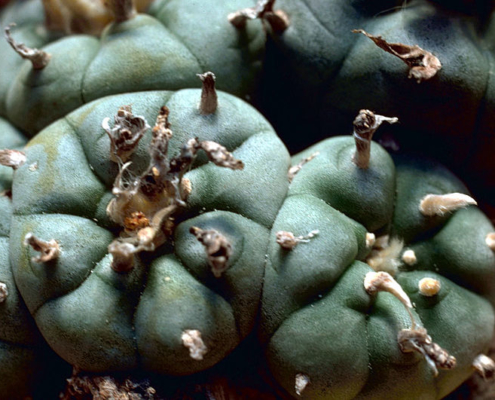Peyote is a curious succulent revered by Native Americans for its mystical powers and its ability to heal wounded souls. This cactus is rich in the psychoactive substance mescaline.
Known scientifically as Lophophora williamsii, peyote is a spineless, blue-green cactus. The Bundt-shaped plant is adorned with disc-shaped “buttons” that contain the hallucinogen mescaline. It grows throughout northern Mexico as well as in two small regions of southern Texas, near Laredo.
The cultivation of peyote and use of mescaline is largely illegal in the United States, but it is recognized as a sacrament in the Native American Church of North America. As such, it is exempt for Native American religious ceremonies under the 1994 American Indian Religious Freedom Act.
In June 2019, Oakland, California’s city council voted unanimously to decriminalize peyote along with psilocybin. As such, the city’s law enforcement will no longer investigate and prosecute individuals for using or possessing or growing drugs sourced from plants, cacti or fungi.
How is peyote used?
The buttons of peyote are cut off and are chewed, either fresh or dried, or soaked in water to produce an intoxicating liquid. Because mescaline has a bitter taste, it is often ground into powder for capsules and swallowed or smoked with marijuana and tobacco.
Dosing is difficult to measure as the mescaline buttons vary in size and potency. But the average dose appears to range from three to six buttons up to as many as 30 buttons.
Mescaline has been used for thousands of years by the indigenous people of North and Central America to treat fever, colds, blindness, pain and other conditions. It is also used by Native Americans during religious ceremonies to elevate awareness and cause a dreamlike altered state of awareness.
Approximately 300,000 members of the Native American Church can ingest peyote legally.
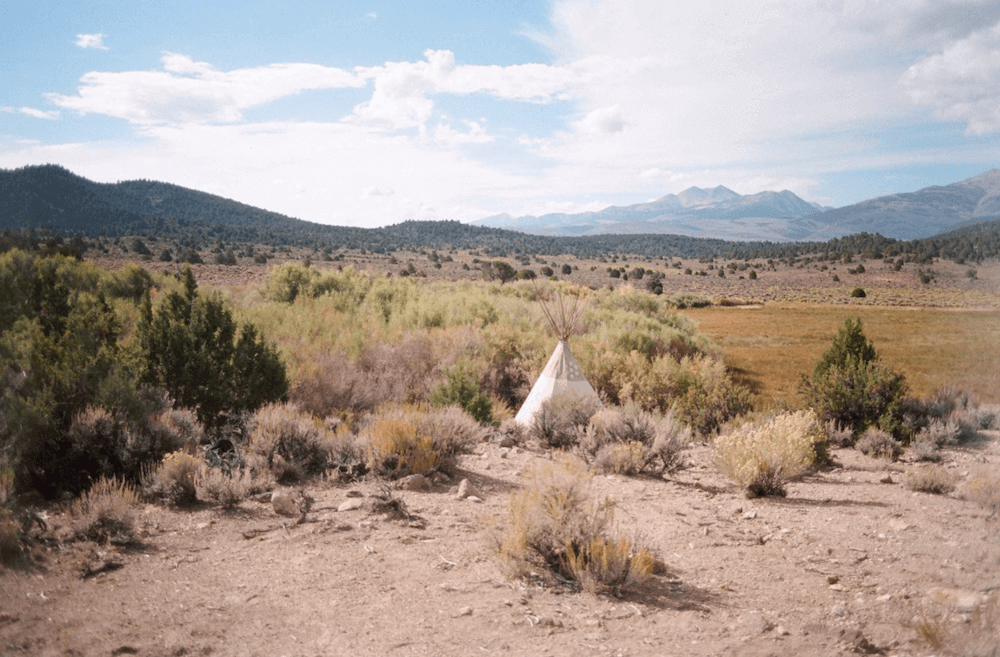
What is a peyote ceremony like?
Peyote ceremonies vary slightly from tribe to tribe, but the general practice is the same. Ceremonies are traditionally held at night, often in a tepee around a fire or alter. A shaman or tribal chief leads the ceremony during which the mescaline is passed around to each guest. Chanting, singing, praying, and drumming often take place during the experience. There is also quiet time for personal reflection.
What does a peyote experience feel like?
While under the influence of peyote, some people report intense visual distortions or hallucinations or, less often, auditory hallucinations. Occasionally, people will vomit or experience headaches or anxiety. Many of the physical symptoms occur shortly after ingesting the substance and gradually fade into a sense of peace and calm. Some say they experience a sense of forgiveness for their sins from Peyote, the “High Spirit.”
How long the effects last depend on the potency and amount of mescaline ingested. Generally, the high peaks about two hours after ingestion and gradually wears off over the next eight to 18 hours. The ceremonies usually end with a large festival.
Peyote isn’t considered as a physically addictive drug, though some mental health experts worry it may produce psychological dependency. Although rare, severe toxicity and even death can occur from mescaline overdose. Also rare are cases of botulism, a serious food poisoning, from consuming peyote contaminated with the toxin.
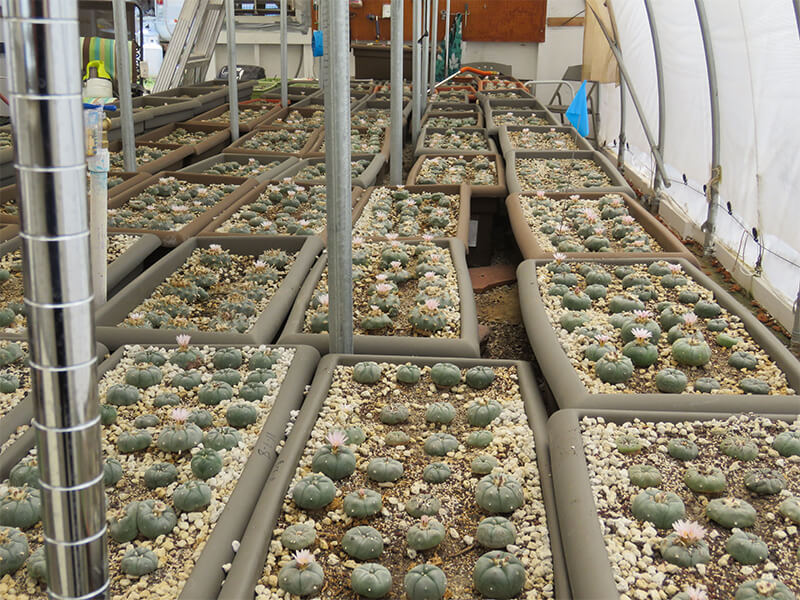
Where can I experience a peyote ceremony?
It is possible to schedule a Spirit Walk with the Peyote Way Church of God in a remote part of the Arizona desert. For a $400 donation, church leaders will prepare you for and guide you through the experience. You can also find several peyote adventures in Mexico through a simple Google search. But be aware that peyote is considered a vulnerable species due in large part to tourism-related over-harvesting.
What are the therapeutic benefits of peyote?
There have been very few studies on the therapeutic effects of peyote, mainly because its use is largely protected by Native Americans. One study, published in Biological Psychiatry, found that mescaline may increase blood flow and activity in portions of the brain responsible for emotion regulation and behavior, suggesting that mescaline may quell symptoms of anxiety and depression.
The Native American Church has long said peyote ceremonies can treat alcohol and drug addiction. One strong indicator of its success may be that the rate of alcoholism among members of the Native American Church is surprisingly low compared to the general Native American population, which is said to be more than twice the national average.
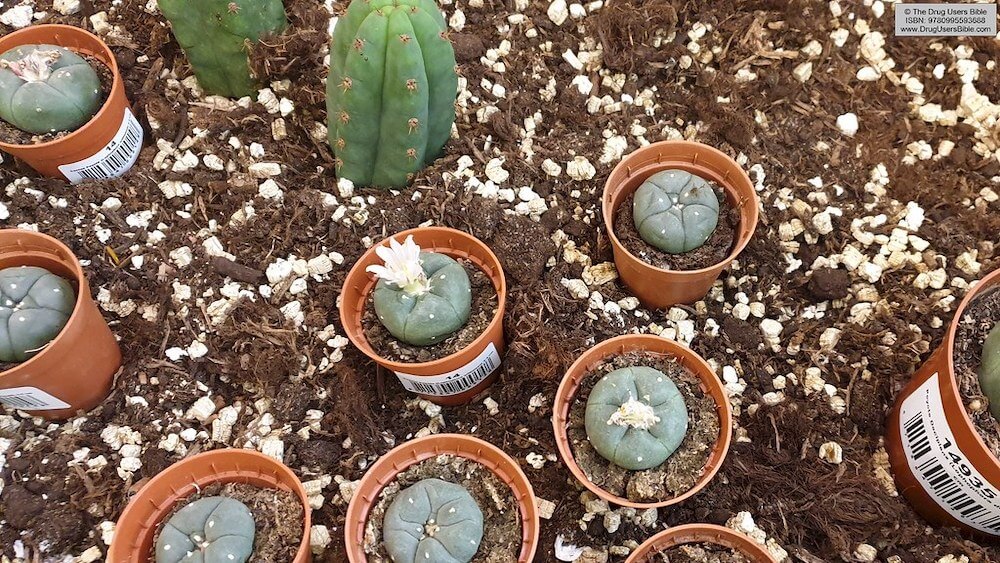
Growing peyote
Peyote is a vulnerable species, but growing it in the U.S. can be tricky. That’s because growing it is illegal unless you live in a region where it was recently decriminalized. Or, if you jump through several regulatory hoops. And even then, you may not qualify if you don’t fit the proper criteria.
For starters, to grow peyote in the U.S., you must be a member of the Native American Church of North America and be registered with the U.S. Drug Enforcement Administration (DEA). Other requirements for cultivating peyote include:
- Living in Arizona, New Mexico, Nevada, Oregon, or Colorado
- Member of the Native American Church of North America and at least 25% First Nations
- Have a notarized Declaration of Religious Belief on file with federal authorities
- Have a copy of the Declaration of Religious Belief posted where the cactus is grown
Cultivating peyote is also a time-consuming process; it can take a decade or more for the succulent to mature. Most of the plant forms underground spreading wide, parsnip-like roots into the soil. Only a small 2-inch fuzzy blue-green orb—called the crown—peeks out from the dirt. Occasionally, the cactus will sprout pink flowers and edible pink berries.

